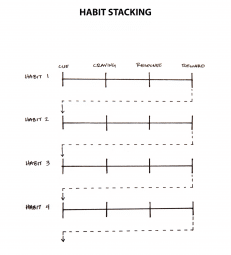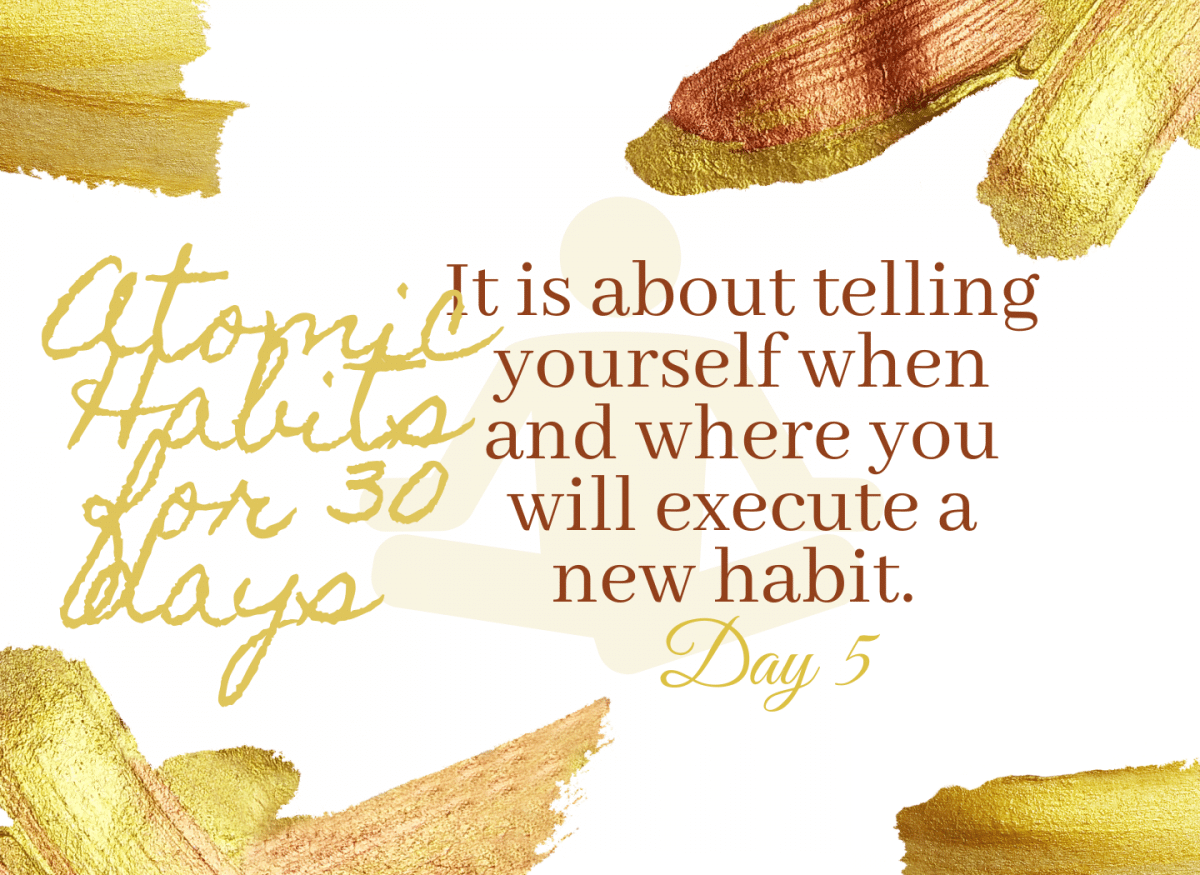Chapter 5 starts with the Implementation Intention. It puts a habit into a context and doesn’t give you time to ‘think’ when the time arrives. Suppose you said to yourself that you are going to meditate for 5 minutes and all day you keep procrastinating. It is already time to go to sleep and now you will say it’s too late, let me meditate tomorrow.
Implementation Intention: It is about telling yourself when and where you will execute a new habit.
For example:
- Meditation: After I pour my cup of coffee each morning, I will meditate for one minute.
- Gratitude: After I sit down for dinner, I will say one thing I’m grateful for that happened today.
- Safety: After I put on my running shoes, I will text a friend or family member where I am running and how long it will take.
The idea is to be as transparent as possible. Don’t just say, “I will meditate before starting work.” Instead, say something such as, “I will meditate for five minutes at my desk before opening my laptop.”
Habit stacking

Source: Jamesclear.com
Habit stacking increases the likelihood that you’ll stick with a habit by stacking your new behavior on top of an old one.
The habit stacking formula:
“After [CURRENT HABIT], I will [NEW HABIT].”
Examples of routine habit stack:
- After I pour my morning cup of coffee, I will meditate for sixty seconds.
- After I meditate for sixty seconds, I will write my to-do list for the day.
- After I write my to-do list for the day, I will immediately begin my first task.
Overall, habit stacking allows you to create a set of simple rules that guide your future behavior.
Examples of general habit stacks:
- Finances: when I want to buy something over £100, I will wait 24 hours before purchasing.
- Healthy eating: when I serve myself a meal, I will always put veggies on my plate first.
- Minimalism: when I buy a new item, I will give something away. (One in, one out)









Comments & Discussion
30 COMMENTS
Please login to read members' comments and participate in the discussion.